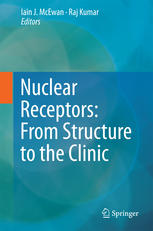

Most ebook files are in PDF format, so you can easily read them using various software such as Foxit Reader or directly on the Google Chrome browser.
Some ebook files are released by publishers in other formats such as .awz, .mobi, .epub, .fb2, etc. You may need to install specific software to read these formats on mobile/PC, such as Calibre.
Please read the tutorial at this link: https://ebookbell.com/faq
We offer FREE conversion to the popular formats you request; however, this may take some time. Therefore, right after payment, please email us, and we will try to provide the service as quickly as possible.
For some exceptional file formats or broken links (if any), please refrain from opening any disputes. Instead, email us first, and we will try to assist within a maximum of 6 hours.
EbookBell Team

4.7
86 reviewsNuclear Receptors focuses on the structural analysis of nuclear receptors from the initial work using isolated protein domains to the more recent exciting developments investigating the conformational shape of full-length receptor complexes. The book also reviews the structure of key nuclear receptor co-regulatory proteins. It brings together, for the first time, a comprehensive review of nuclear receptor structure and the importance of receptor conformation underpinning allosteric regulation by different ligands (hormone, drugs, DNA response elements, protein-protein interactions) and receptor activity.
The nuclear receptor superfamily, including receptors for steroid hormones and non-steroid ligands, are pivotal to normal physiology, regulating processes as diverse as reproduction, metabolism, the immune system and brain development. The first members of the family were cloned over 25 years ago, which heralded in the idea of a superfamily of intracellular receptor proteins that bound small molecule ligands: classical steroid hormones, vitamins, fatty acids and other products of metabolism. These signals are then transmitted through multiprotein receptor-DNA complexes, leading to the regulation of target genes, often in a cell-selective manner. The cloning of the receptor cDNAs also ushered in an era of unparalleled analysis of the mechanisms of action of these ligand-activated transcription factors.